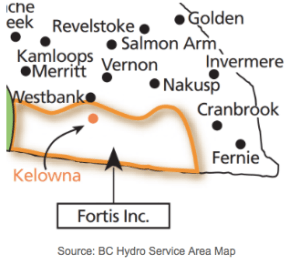 You may have seen the graphs, maps and diagrams saying how much solar potential we have in Western Canada, yet places like Germany are still so far ahead of us. If we have so much more sun, why would we not install as much solar as we possibly can? The answer lies primarily in 1) government incentives and 2) electricity price. The electricity price is set by the utility companies and in South-central British Columbia, solar has a particularly more difficult time competing because of new BC net metering regulations recently imposed by Fortis BC who is the wire service provider for the area shown below.
You may have seen the graphs, maps and diagrams saying how much solar potential we have in Western Canada, yet places like Germany are still so far ahead of us. If we have so much more sun, why would we not install as much solar as we possibly can? The answer lies primarily in 1) government incentives and 2) electricity price. The electricity price is set by the utility companies and in South-central British Columbia, solar has a particularly more difficult time competing because of new BC net metering regulations recently imposed by Fortis BC who is the wire service provider for the area shown below.
